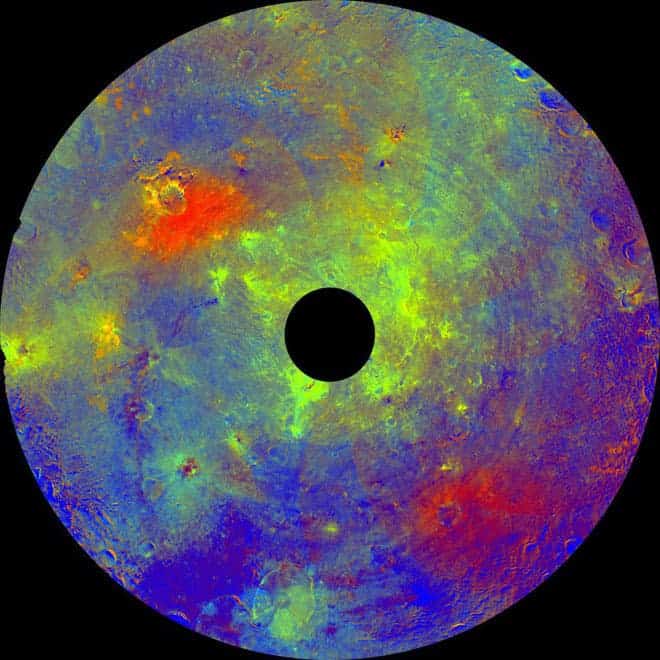This rainbow map of the Vesta asteroid was obtained using NASA’s Dawn spacecraft and it shows that it has much more planet-like features than its mates from the asteroid belt.
Vesta is a pretty special place, with lots of surprises; it has a weird history, a mountain 3 times bigger than the Everest, and now, as it turns out, an interesting mineralogy. The colors you see in this image are practically different types of rock; the image was taken with the probe’s framing camera, which was built by the Max Planck Institute for Solar System Research and the German Aerospace Center. It basically picks up different wavelengths emitted by different minerals.
The green colored areas for example suggest wavelengths of iron-rich pyroxen, a silicate found mostly in igneous rocks. This all goes to show Vesta is a diverse object, unlike most other asteroids, and it has well-separated layers – all of which point at it being a protoplanet, an embryonic world which might have become a regular planet, if it hadn’t had the misfortune of being trapped in the lethal asteroid belt.
“The distinct compositional variation and layering that we see at Vesta appear to derive from internal melting of the body shortly after formation, which separated Vesta into crust, mantle and core,” said Carol Raymond, Dawn’s deputy principal investigator at NASA’s Jet Propulsion Laboratory, in a press release. “Vesta’s iron core makes it special and more like terrestrial planets than a garden-variety asteroid.”
The $466-million Dawn spacecraft has been studying Vesta since July this year, and will continue to do so until the summer, when it will move on to Ceres – another protoplanet, and the largest body in the asteroid belt.
Via Wired



